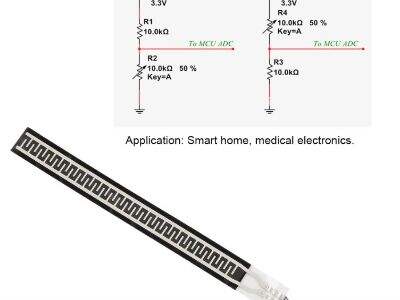The long and the short of it Flex sensors are REALLY COOL gadgets that let us see how things move and bend. They’re just little detectives who describe what the twists and turns are that are coming at us. Old-fashioned sensors are good at this, too: at keeping track of things, but in a different way. In this chapter today, we are going to cover some unique capabilities of flex sensors as well as common sensors and how they will assist us in different projects.
What Are Flex And Normal Sensors?
Flex sensors are thin, and they are bendable just like a straw. They can be hooked to various things to watch how they move. When something flexes, the flex sensor deforms similarly and we exploit this deformation to sense the motion. Conventional sensors typically have a higher rigidity and volume. They sense movement and changes in the environment with methods such as pressure or temperature. Flex sensors and old-school sensors each have special powers that allow us to know things about the world.
Comparison of Voltage Differences and Applications of Flex Sensors
Flex sensors are versatile, thus they are used in various applications. They can be curled to easily fit in a tiny space or wrapped around speaker-stands. This makes them very effective in observing motions that are greatly flexible. Standard sensors may not be so malleable and can be constrained in where they can fit. But they remain very good at detecting changes, and telling us stuff we consider important.
Accuracy and Reliability of Conventional Sensors
"By contrast traditional sensors are accurate and reliable. They’re like good friends who are just always telling us the truth, always letting us know the truth. They bring precision to measurement and can be reliably deployed when things are of consequence. The accuracy of flex sensors may also be less than that of ordinary sensors. They are best for watching movements that change significantly, not precise measurements. But used properly, they can still help us to understand how the world moves.
Advantages of Using Flex Sensors on Moving Applications
You can track the movements that change a lot with flex sensors. Picture a robot that has to bend and twist its arms to grasp objects. Its flaccid limbs can learn to know exactly how to move so they don’t drop anything. They’re also useful for observing how our bodies move during exercise or in sports. Thanks to flex sensors, we can push our boundaries in sports and stay safe.
Flex + Traditional = Best of Both Worlds
By combining the capabilities of flex sensors and conventional ones, we can make super sensors capable of doing incredible things. Conventional sensors provide accurate measurements and, while flex sensors provide insight into changing motions as they occur. It can be used in many cool gadgets such as smart wearables, robotic arms or even medical devices. New technology can produce solutions that simplify and heighten the pleasure of life.


